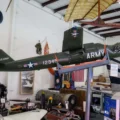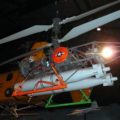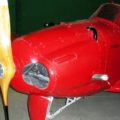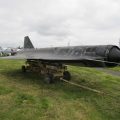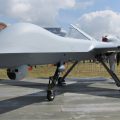
GAF Pika | |
|---|---|
| Land | Australien |
| Rolle | Zieldrohne |
| Erstflug | 28. August 1952 |
| Gebaut | 517 |
das GAF Jindivik ist eine ferngesteuerte Zieldrohne der Australian Government Aircraft Factories (GAF). Der Name stammt von einem australischen Aborigine-Wort, das "der Gejagte" bedeutet. Zwei manuell gesteuerte Prototypen wurden als GAF Pika (Projekt als Proof of Concept zum Testen der Aerodynamik, des Motors und der Funksteuerung, Seriennummer A92-1/2, 'B-1/2') gebaut. Die funkgesteuerte Jindivik wurde zunächst als Projekt B bezeichnet und erhielt Serien in der A93-Serie. Pika ist ein australisches Aborigine-Wort mit der Bedeutung Flieger
Quelle: GAF Pika auf Wikipedia
| GAF Pika | |
|---|---|
| Fotograf | Wladimir Nikolajewitsch Jakubow |
| Lokalisierung | RAAF Museum, Point Cook |
| Fotos | 47 |
Siehe auch:
das GAF Pika was a piloted prototype of a radio-controlled target drone that was developed by the Australian Government Aircraft Factories (GAF) in the early 1950s. The Pika was used to test the aerodynamics, engine and radio control systems of the drone, which was later named Jindivik, an Aboriginal word meaning “the hunted one”. The Pika was powered by an Armstrong Siddeley Adder turbojet engine, which had a thrust of 500 kgf. The Pika had a wingspan of 5.79 m, a length of 7.49 m and a height of 1.92 m. It had a maximum speed of 756 km/h and a service ceiling of 9,754 m.
Two Pika prototypes were built and flown from Woomera airfield in South Australia. The first one, A93-1, made its maiden flight on 4 November 1950 and was destroyed in an accident in April 1951. The second one, A93-2, flew for the first time in April 1951 and had a longer nose and exhaust cone than the first one. It is currently preserved at the RAAF Museum at Point Cook, Victoria.
Aufrufe: 1185


